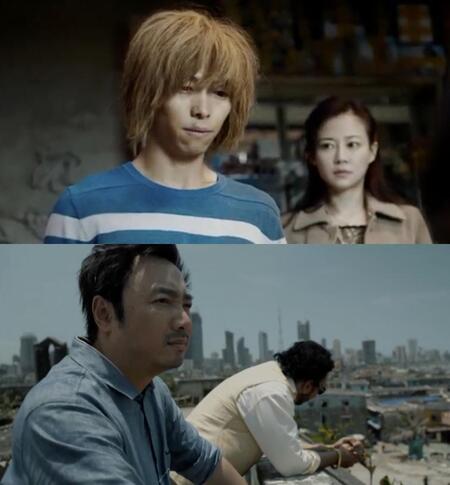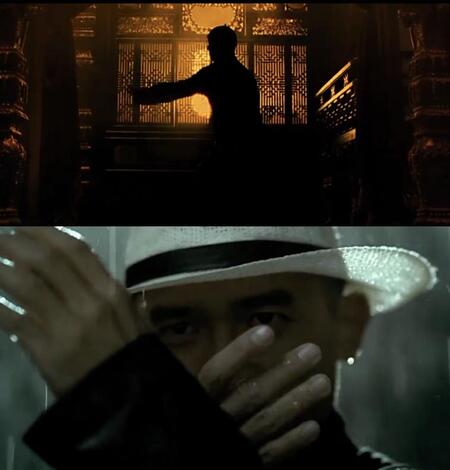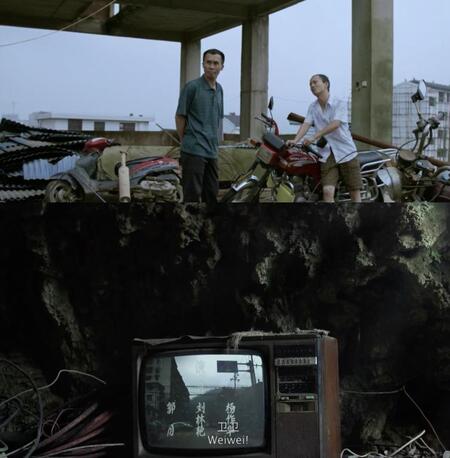
Exclusively for HSE, Intuit Lab, and CAFA students. Read more 🔗 about the competition
The contest has two rounds. Submissions are currently open for Round 1, assessed by national juries, and the same projects will carry through to Round 2, judged by the international jury.
step 1 / choose a movie: Chinese watchlist

Dying to Survive (2018, Wen Muye) // 《我不是药神》 (2018, 文牧野)
Dying to Survive is a film adapted from a true story. It tells the story of Cheng Yong, the owner of an Indian herbal oil shop, who transforms from a male health products vendor struggling to pay rent into the exclusive agent of the Indian generic drug «Gleevec.»
The film drew national attention to the issue of anticancer drugs and contributed to reforms in the healthcare system, drug regulation, and social assistance mechanisms. Dying to Survive marks a breakthrough in Chinese cinema, serving as a rare example of a work that leverages the power of film to reflect profound social significance.

Farewell My Concubine (1993, Chen Kaige) // 《霸王别姬》 (1993, 陈凯歌)
Farewell My Concubine is a drama directed by Chen Kaige, starring Leslie Cheung, Gong Li, and Zhang Fengyi. It was released in Hong Kong, China in 1993. The movie is adapted from Li Bihua’s novel of the same name. Set against the backdrop of Chinese history from the 1930s to the 1970s, it tells the story of two Peking Opera actors, Cheng Dieyi and Duan Xiaolou, who experience the vicissitudes of the times and have a love-hate relationship and a turbulent life that lasts for half a century.

The Grandmaster (2013, Wong Kar-wai) // 《一代宗师》 (2013, 王家卫)
The Grandmaster is a kung-fu movie directed by Wong Kar-wai. This film tells the stories of multiple grandmasters from the «Northern and Southern Martial Arts Circles» during the Republic of China era, as well as the legendary life of Ye Wen, a great martial arts master. Inheriting the spirit of Chinese martial arts is the creative concept that The Grandmaster has always adhered to. Wong Kar-wai incorporated this concept directly into the movie’s plot and the art design of the shooting scenes. The image positioning of different stars is also based on the characteristics of different martial arts schools. The four major schools of traditional Chinese martial arts — Wing Chun, Bagua, Baji, and Xingyi — are all gathered under the «umbrella» of The Grandmaster, integrating the authentic spirit of Chinese martial arts with the commercial filmmaking mechanism.

Kaili Blues (2015, Bi Gan) // 《路边野餐》 (2015, 毕赣)
In Kaili, a mountain town in southwest China, two doctors lead quiet yet troubled lives at the county clinic. To fulfill his mother’s dying wish, rural doctor Chen Sheng embarks on a journey to a neighboring town in search of his nephew Weiwei, who was sent away. His colleague, an elderly doctor, entrusts him with a token to find her old friend from her youth. Along the way, Chen Sheng arrives at Dangmai — a mysterious village that seems suspended in a temporal rift. Here, past, present, and future intertwine: he seems to encounter the shadow of a departed lover and glimpses fragments of his nephew’s future. These encounters with relatives, lovers, and strangers blur the lines between memory, reality, and prophecy. Gradually, the journey transcends geography, becoming a surreal experience traversing memory and time, reality and illusion.

Kung Fu Hustle (2004, Stephen Chow) // 《功夫》 (2004, 周星驰)
This film narrates the transformation of a street thug into a master martial artist, alongside the redemption of a compassionate gangster who turns away from a life of crime. Ah Sing, a former delinquent who endured severe bullying during his childhood, seeks power and recognition by impersonating a member of the notorious «Ax Gang.» He attempts to extort residents in a slum known as «Pigsty Alley,» only to inadvertently ignite a violent confrontation between the actual Ax Gang and the community’s inhabitants. As he witnesses the intense struggle between good and evil, Ah Sing gradually comes to understand the true essence of kung fu — not merely as a means of combat, but as a path of moral integrity and self-mastery.
step 2 / translate and reimagine
Ask yourself: «If the message and spirit of this film were turned into a contemporary „Brand®“ in my country, what would it look like?» The name of the movie could be changed if necessary for the purpose of the brand you want to create.
Analyze the core DNA of the story — its emotion, symbolism, conflict, and values. Then reinterpret it within your own cultural environment, while keeping its original essence alive.
Define: • The brand positioning (what it stands for) • The narrative promise (what it conveys emotionally or socially) • The signature or tagline
step 3 / design the identity
Create the visual and editorial world of your film-brand:
• Logo and graphic universe (color palette, typography, layout) • Visual and editorial tone • Main campaign poster or rebranded film cover • Social media content (3–5 posts minimum)
Optional but encouraged: merchandising mockups, teaser video, or a short 2-minute trailer. You are free to explore any format — from digital to print to motion — as long as your storytelling remains coherent and culturally meaningful.
step 4 / prepare the presentation
Compile your project into a clear and engaging presentation:
• 1 brand strategy note (vision, values, positioning, adapted title) • 1 logo and full visual identity system (colors, typography, moodboard) • 1 poster or key visual • 3–5 social media posts • Optional: 1 short trailer (max 2 min) • 1 presentation deck (max 30 longread blocks) uploading here on «create a project»
when creating your project on the platform, please name it using the following format:
Culture Mirror: [Movie Name]
step 5 / submit and get featured
Submit your project on your film country’s landing page.
Individual submissions only.
Final deadline: January 15, 2026.
After the first evaluation, five projects per country will be shortlisted.
A second round of juries will then select the three best international interpretations per country, and finally, one winning project will be chosen in March 2026.
The 15 finalist projects will form the basis of a traveling exhibition across all five countries.
make sure your project includes both tags:
«identity & branding» «intuit lab x hse art and design school x cafa»
contacts
Info: info@dafes.org Technical support: support@dafes.org
Regulations of the HSE x Intuit Lab x CAFA: Culture Mirror Intercampus Design Challenge — by participating in this contest, you agree to these Regulations in full.